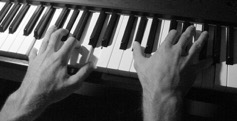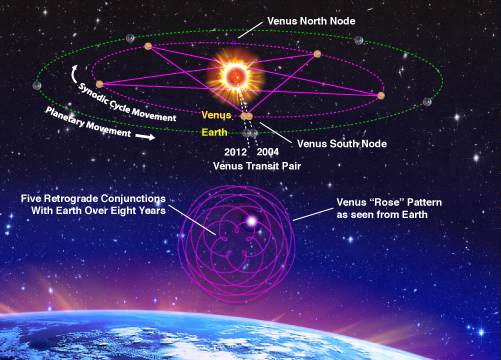
Figure 1. The “rose line” orbital pattern of Venus.
Uncovering the Ancient Science of Sacred Spaces
Applying the principles of resonance to unlock the secrets of Scotland’s Rosslyn chapel, Richard Merrick finds evidence that the orbital pattern of Venus was once used as a “temple template” to design psychoacoustical chambers capable of focusing and controlling entheogenic communion.
In ancient times, astronomers tracked the orbit of Venus very closely, discovering that it traced a pentagonal rose pattern in the sky over eight years (Fig. 1). Caused by a planetary resonance where Venus orbits the Sun thirteen times for every eight orbits of the Earth, this rose-line or “rosslyn” pentacle was greatly revered in the mystery schools. It was even used as a blueprint to design the “sacred spaces” of many famous chapels, cathedrals and temples.
As I came to discover, a sacred space is far more than just a matter of religious belief. It is a special kind of resonant chamber designed to enhance entheogenic communion and focus psychedelic visions. Suppressed long ago by the Roman Church, this was once the real purpose of ancient temples and many medieval cathedrals.
Resonant Symbols of Venus
In 2006, I saw a press release announcing that the resonance patterns of a song had been carved into the arches of Scotland’s 15th-century Rosslyn chapel. Curious as to why resonant patterns would be carved into the architecture of a medieval chapel, I began to study the chapel. It was not long before I began to suspect that Rosslyn had been built to honor Venus and its resonant rose-line.
The most obvious clues were the thirteen cherubs and eight dragons carved into the easternmost pillars, suggestive of the 13:8 Venus-Earth orbital resonance. This connection made sense since the ancient Greeks and Romans considered cherubs the children of Venus while serpent-dragons were also associated with the Venusian goddess Shukra in the Rig-Veda. The discovery in 2010 of two manmade beehives carved into the chapel’s roof seemed to confirm this connection between Rosslyn and Venus, as bees are an ancient fertility symbol for Venus.
Yet, there were more clues that connected Rosslyn with Venus. Pentagrams carved underneath the cherubs suggest the pentagonal rose pattern of Venus while each cherub is shown playing a musical instrument, an obvious reference to the goddess of music. This musical symbolism extends even into the proportions and acoustics of the chapel’s architecture.
For instance, the inner dimensions of the chapel form a double square measuring 36 by 72 feet with a diagonal distance of 80.5 feet that is proportional to the square root of five. Since the famous golden ratio constant is derived from the square root of five and every orbital intersection of the Venus rose-line creates a golden ratio, the chapel seems built to harmonize with Venus. Add to this the fact that the choir loft height of 44.5 feet forms another golden ratio to the total interior length (as 72’ / 44.5’ = 1.618) and it seems hard not to conclude the Lady Chapel was built as a temple to Venus.
Acoustically speaking, these dimensions make Rosslyn chapel a natural resonance chamber that propagates sound evenly while suppressing reverb and echo. It does this because of the damping effect of the golden ratio, long used in the design of “anechoic” musical instruments, auditoriums, recording studios and speaker enclosures. As an ideal acoustical damping enclosure, Rosslyn reflects the same damping effect Venus had on Earth during the harmonic formation of the solar system.
The Venus Blueprint
The presence of so many Venusian symbols would seem enough to qualify Rosslyn chapel as a sacred space. Cherubs, dragons, bees, pentagrams, the golden ratio and acoustical damping all point to Venus as the source of inspiration in the design. Yet, as I dug deeper I found that the chapel was in fact part of a more complex, multi-layered “sacred” geometry corresponding to the human body and fertility.
For example, when the square of the chapel’s overall length is combined with a circle having the same area, Leonardo da Vinci’s famous Vitruvian Man fits perfectly within the chapel’s floor plan. His navel aligns with the east wall; his face fits inside an underground room; and the famous Journeyman or “Shekinah” pillar aligns with his perineum to create an obvious phallic fertility symbol directly in front of the holy of holies altar. Since Leonardo was still a baby when Rosslyn was being built, the chapel’s designers must have learned about the “squaring of the circle” and human-proportioned architecture from Vitruvius’ original treatise De Architectura (Fig. 2).

Figure 2. Vitruvian design of Rosslyn chapel.
But, this is not all. When the triangular façade is laid inward, the tip touches the exact center of the Shekinah pillar. Indeed, a scale model of the Great Pyramid can be unfolded around this central fertility pillar to create the well-known Knights Templar symbol. Could all of this be part of the secret art and architecture of sacred acoustical spaces, I wondered, passed down from antiquity through some esoteric current?
The more I looked, the more sacred geometries I found. Still, I had no idea where this practice had originated or why it would be so important to create such geometrically and acoustically harmonious chambers for religious worship. That is, until I saw a mysterious etching on the south wall of the chapel’s underground sacristy (Fig. 3).
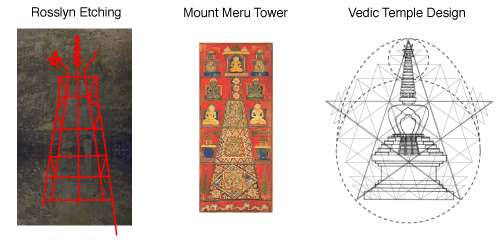
Figure 3. Rosslyn Meru tower etching.
Resembling an oil derrick or electrical tower, the Rosslyn etching has diagonal struts and a flat top with a semicircle funnel or “cup” sitting on top. Through the middle of the tower runs an axis with two wavy lines wrapped around the top like the serpents in a medical caduceus. Finally, as an apparent reference to the orbital geometry of Venus, there is a pentagram star at the top left.
After pouring through various ancient texts to see if anything looked similar, I found a Jainist illustration of a tower modeled after an ancient sacred mountain named Meru. I learned this mountain tower was a Vedic stupa design used in many temples and government buildings. Studying the Rig-Veda, I learned that Meru was not considered a physical mountain at all but instead believed to be an invisible and transcendental mountain that extended from the deepest ocean into the furthest sky – a heavenly place where the gods danced and sang. Of course, this is an obvious anthropomorphization of the planets and stars into deities, but it is much more than this.
According to Vedic grammarian Pingala in his Art of Prosody (400-200 BC), Meru was considered a “mountain of cadence” known today as the Fibonacci series. Since this series converges toward the golden ratio, both Meru and Venus share this constant of nature. Discovering this, I began to wonder if the orbital geometry of Venus might have been used to design Rosslyn as a recreation of the sacred mountain and temple to Venus.
So, I overlaid the orbital geometry of Venus onto the chapel floor plan to see if anything aligned. Drawing a square grid from the orbital intersection points, I was stunned to see the orbital rose-line of Venus align with many features and dimensions of Rosslyn chapel. Converting the rose-line into a stack of pentagrams, I could identify even more alignments with the floor plan, including length and width dimensions, locations of pillars, placement of doors and even the thickness of walls (Fig. 4).
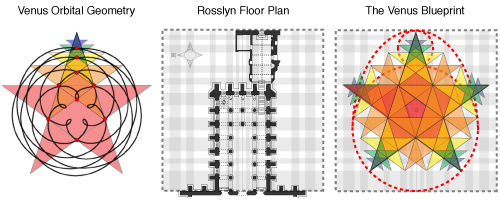
Figure 4. The Venus Blueprint of Rosslyn Chapel.
Surrounding the whole thing with the geometry of an egg, associated with Venus and commonly used in Vedic temple design, I found that the star-egg combination fit perfectly in the chapel. Naming it the “Venus Blueprint,” I hypothesized it was used as a “temple template” to design sacred spaces that would resonate in tune with the 5-fold geometry of the human body and, in particular, the pentagonal egg of the cranial cavity. But toward what purpose would someone go to such trouble? What would be so sacred about this particular design?
Psychoacoustical Temples
Discovering the Venus Blueprint in the floor plan of Rosslyn chapel encouraged me to look for it in the floor plans of other churches, cathedrals and temples. To my astonishment, I found that many other European cathedrals do indeed use the same interior proportions and that many famous temples from antiquity even match the Venus Blueprint. St. Peter’s Basilica at the Vatican appeared to be based on this design, as did the Roman Pantheon and Greek Parthenon. Even Solomon’s legendary Temple of Jerusalem seemed to have been constructed according to the Blueprint.
In finding so many examples, I could only conclude the orbital resonance of Venus had been the guiding model behind ancient temple building for millennia and that Rosslyn was a kind of Rosetta Stone built to teach the world about the Vedic concept known as the Sound Current that flows through everything. It teaches how the pentagonal resonance of Venus was used in ancient temples to ask the goddess to fertilize crops and assist in childbirth. It tells us how she was adored for her celestial fertility and assistance in ascending Meru after death. But most of all, the Lady Chapel teaches us through her musical architecture about spiritual freedom and how to liberate the mind.
In examining the acoustical properties of the chapel, I calculated that at a room temperature of 20°C, the chapel’s prime resonant frequency is 27 hertz with a wavelength equal to the 72-foot interior length of the chapel. This means that the chapel is naturally tuned to A-422.25 – a tuning known as “classical tuning,” used as the standard reference pitch during the 18th century. This is significant because it happens to be a very natural tuning that can help synchronize the human mind with the Earth and all of nature.
Twenty-seven hertz is about equal to the fourth harmonic of the Schumann resonance of the Earth’s ionosphere – the very frequency where the human brain switches from Beta wakefulness to heightened Gamma awareness. Brain wave frequencies above 27 hertz then create the highest state of focus possible. The Gamma range is associated with peak concentration, enhanced memory, an increased perception of reality and even euphoria. The higher the frequency the greater is the cognitive ability.
There is also evidence that Rosslyn was heated during funerary rites to raise its tuning well above A-422.25, elevating human consciousness even more. Describing this practice is an old Scottish legend preserved in a poem by Sir Walter Scott entitled The Lay of the Last Minstrel. Scott tells how the chapel was seen engulfed in flames during the funerals of the Sinclair Barons whose family built Rosslyn chapel.
O’er Roslin all that dreary night,
A wonderous blaze was seen to gleam;
Twas broader than the watch-fire’s light,
And redder than the bright moon-beam.
Seem’d all on fire within, around,
Deep sacristy and altar’s pale;
Shone every pillar foliage-bound,
And glimmer’d all the dead men’s mail.
… Then sudden, through the darken’d air
A flash of lightning came;
So broad, so bright, so red the glare,
The castle seem’d on flame.
... And fill’d the hall with smouldering smoke.
Not coincidentally, the temperature required to gestate a beehive is 33.72°C (equal to 93.7°F) – the very same temperature required to raise the tuning of Rosslyn up to A-432 or what is known as “universal tuning.” At this hive temperature, singing the right chant and music could push the brain further into the Gamma range, perhaps even inducing what is known as “unity of consciousness.”
Thus, the beehives in the chapel’s roof, the symbolic children of Venus, may have been used as a kind tuning fork to measure the temperature and frequency needed to reunify human consciousness, fertilize the spirit and perhaps “hatch” a soul during funerary rites. It appears the Venus Blueprint not only creates a wonderful anechoic acoustical space to cleanly propagate speech and music but also a psychoacoustical space capable of triggering elevated states of consciousness.
Psychedelic Communion
Digging deeper into the history of temple rituals, I uncovered yet another clue that seemed to explain why such psychoacoustical effects were so important to temple builders. It had to do with the long tradition of consuming communal wine and bread in remembrance of various plant deities known as “Green Men.” In Rosslyn chapel, there are over one hundred such Green Men carved into the architecture, symbolizing the importance of communion in temple ritual.
In the Rig-Veda, the Green Man was the moon god Soma who was associated with a communal wine of the same name. Researchers such as R. Gordon Wasson make a convincing case that Soma contained psychedelic Amanita Muscaria or “magic” mushrooms. There are many instances throughout the Vedas ascribing great powers to Soma and its ability to induce religious visions.
Oh, King Soma, prolong our lives
Like the sun who nourishes the days every morning.
The Soma is full of intelligence
It inspires man with enthusiasm
It makes the poets sing.
We have drunk the Soma: we have come to be immortal, we have arrived at the Light, we have reached the Gods.
Half of me is in the skies, and the other extends to the low depths
Have I drunk Soma? I am tall to the utmost, my elevation reaches the clouds Have I drunk Soma? (Rig-Veda 8.48)
This is not an isolated instance. Use of psychedelic or “entheogenic” plants was common in many other cultures as well. This includes the Greek Eleusinian and Dionysian mystery schools, the Roman Bacchanalia and even the ancient Etruscans, who practiced entheogenic communion on what is now Vatican Hill. Persians would ingest psychedelic Syrian Rue seeds used to dye “magic carpets” while the Egyptians ate manna cakes made with psychotropic plants, such as “blue lotus,” Psilocybe cubensis mushrooms or perhaps DMT-rich acacia, the Egyptian Tree of Life.
According to psychology professor Benny Shanon at the Hebrew University of Jerusalem, entheogenic communion was also central to the Hebrew temple tradition. The head priest would take a communion in the holy of holies on Yom Kippur that consisted of entheogenic wine and manna. Indeed, Shanon attributes many of the visions and miracles of the Bible to the ingestion of psychoactive plants. He suggests entheogenic communion was a central part of the Essene mystery school, but later replaced by ordinary wine and bread in the Roman Church to ensure religious visions remained exclusive to the priestly class (the Holy See).
In Rosslyn chapel, the many carvings of Green Men with leafy vines growing out of their mouths suggest this same connection through the Essene mystery school back to the ancient Hebrew communion ritual. It would not be a surprise to learn that such communion was even practiced in Rosslyn chapel, perhaps offered as a “consolamentum” to dying barons or taken on auspicious occasions.
Celestial Congress
The true purpose of Vedic temple building was now becoming clear. When combined with entheogenic communion, temples were designed to help propel one’s consciousness into the sky in order to reach the heavenly summit of Mount Meru. Known as enlightenment or ascension, this occurred when one consumed the sacred plant known as the “Savior,” the “Redeemer,” the “Liberator,” and “Anointed One.” Through such psychedelic visions, one might “see the light” and be “born again.”
To help focus and control these visions, first caves and then stone temples were constructed using the Venus Blueprint to help resonate the brain into the Gamma range of frequencies. Known as the “House of the Star” in Canaan and “Place of Intoxication” in Egypt, such temples were likely built according to the Blueprint to fertilize the mind inside the “variegated womb” of Venus. Here the Savior plant could be eaten and reborn into the mind of the worshiper, attaining “Christ [King] consciousness” and rising to the summit of Mount Meru to meet the goddess or other spirit who would impart prophetic visions and great wisdom. Truth is, this is the true religion of the world and unspoken source of prophecy behind countless tales of journeys into the underworld to meet the gods and goddesses.
The two together – the plant god and temple goddess – then represented the celestial congress of the Sun and Venus inside the mind. As I came to understand, this metaphysical union was a kind of reenactment of the rare conjunction of Venus with the Sun known as the Transit of Venus. The Vedic Saivite glosses actually describe this conjunction as the Venusian goddess Shukra being swallowed up by the Sun and later spit out as semen. Indeed, the Sanskrit word Shukra literally means semen. It was the Shukra seed of the Sun that was believed born from Vena’s resonant womb into the waters of the Earth to create life.
This Vena impels them who are in the womb of the variegated one; the membrane of light measures out the sky. At the contact of the waters and the sun the wise kiss him as an infant. (Rig-Veda 10.123)
Celestial fertilization of the mind was the real purpose of the temple. Consumption of entheogenic wine and manna symbolized the “virgin birth” of the Sun’s son (the plant sacrament) inside the temple of the mind. In this way, the orbital geometry of Venus provided not only the blueprint for the sacred space of the temple, but also a blueprint for the ritual of ascension known as Holy Communion.
The Venus Transit
Occurring in pairs only once a century, the last Venus Transit occurred in 2004 with the next once occurring June 5-6, 2012. Appearing as a black dot as Venus travels across the face of the Sun, the transit was known in ancient times as the circumpunct, Eye of Ra and the Birth of Venus. As the ultimate symbol of celestial fertility, the planet Venus was worshipped in the form of many different goddesses from Isis and Ishtar to Aphrodite and Asherah.
In ancient times, the celestial fertilization of Venus during the transit would have been celebrated in Sumerian, Babylonian, Akkadian and Assyrian temples (called ziggurats) using entheogenic communion and resonant chant. In many cases, sexual intercourse would have been part of the temple rite, representing simultaneous fertilization of the mind, body and spirit. This would have been the deepest meaning of the ancient philosophy “as above, so below.”
In Rosslyn chapel, the Hebrew goddess of Venus named Asherah is represented by the Shekinah pillar. As the harmonic center and point of fertility in the chapel’s floor plan, we might say the Hebrew god Yahweh symbolically inseminates the Lady Chapel here. Yet there is more to it than mere symbolism. There is a very real geometrical correspondence to the actual transit path of Venus across the Sun in 2012 (Fig. 5).
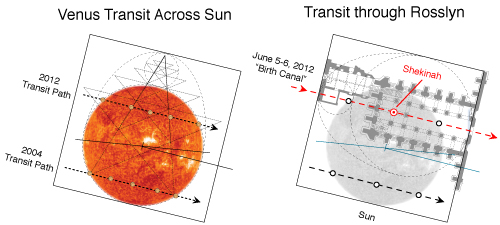
Figure 5. The Venus Blueprint and Birth of Venus through Rosslyn chapel in 2012.
Overlaying the Venus Blueprint onto the actual transit paths, Venus can be seen to align with the bottom two points of the pentagram during the 2004 crossing – then, with a 90-degree turn, pass right through the middle of the Rosslyn floor plan in 2012, reaching the midpoint of its solar crossing precisely at the Shekinah pillar. Symbolically, this path represents a kind of birth canal for Venus, gestating inside the choir’s resonant womb for a while before being born out the rear of the chapel.
With the chapel oriented east-to-west and the Shekinah pillar facing the dawn, the Sun and Venus actually follow an east-to-west path through the sky even as Venus appears to follow the same path across the face of the Sun. As perhaps one of the most profound convergences of planetary harmony, temple design and religious ritual, Rosslyn is a stone map for the 2012 Venus Transit. As the fifth transit pair since Rosslyn was built, Venus joins with the Sun this June 5th-6th to deliver a new Sun.
The question, of course, is how could Rosslyn’s 15th-century designers have known about the geometric alignment between the transit and the chapel’s floor plan? How could they have predicted such an alignment in their design? The truth is they probably knew none of this and did not need to. They simply built their temple according to the Venus Blueprint and everything else just fell into place.
Conclusion
In the end, I became convinced that Rosslyn chapel and many other temples had been designed using the Venus Blueprint or something similar. I believe this was done to focus and control the effect of psychedelic plants while using psychoacoustics to resonate the brain up into elevated Gamma frequencies. Combining sacred plants with sacred spaces, our ancestors were nothing less than spiritual psychonauts. Using an advanced technology of brain resonance – resonating inside-out with entheogens and outside-in using psychoacoustics – they were able to access non-physical realities by methodically altering and controlling states of mind.
Once people were baptized with the sacred waters, the temple became a transceiver and spiritual launch pad to guide them into the realm of the gods. Used in funerary rites, this same technology was used to invoke Venus to guide the dearly departed into the afterlife where they might be reborn to the heavenly summit of Meru. (Fig. 6).
In this way, ancient worshippers were enlightened by the Venusian goddess and “born again” through the Green Man’s “body and blood.” Here was the real savior of humanity – a veritable blueprint for spiritual fertility that inspired vast temple complexes, great cities and proud civilizations. Here was the secret temple template for sacred spaces that guided humanity toward the development of music, science and mathematics, only to be discarded in the rush for political control. This is the forgotten story of the Venus Blueprint and its founding role in the rise of humanity.
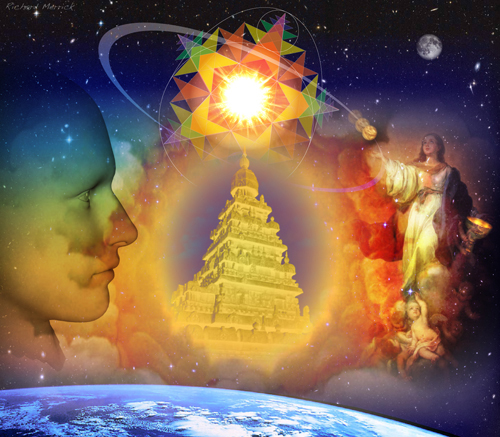
Figure 6. Meru temples as a launch pad into the sky.
Selected References
1. Merrick, Richard. The Venus Blueprint: Uncovering the Ancient Science of Sacred Spaces. Berkeley: North Atlantic Books / EVOLVER, 2012.
2. De Lubicz, R. A. Schwaller. The Temple in Man: Sacred Architecture and the Perfect Man. 1st ed. 1949. Rochester, VT: Inner Traditions International, 1977.
3. “Armenian Highlands: The Ancient Origin of Human Civilization.” www.arevordi.blogspot.com/2010/08/mesopotamias-civilization-originated-in.html.
4. Kak, Subhash. The Astronomical Code of the Rigveda. Rev. ed. New Delhi, India: Munshiram Manoharlal Publishers, 2000.
5. Kak, Subhash. “Vena, Veda, Venus.” Brahmavidya: The Adyar Library Bulletin 60 (1996): 229–39.
6. Snodgrass, Adrian. Symbolism of the Stupa (Studies on Southeast Asia). Cornell University Southeast Asia Program Publications; 2nd edition (March 1, 1985).
7. Knapp, Stephen. Proof of Vedic Culture’s Global Existence. Self-published: BookSurge, 2009.
8. Griffith, Ralph T. H. “Rig-Veda, Book 10, Hymn CXXIII. Vena.” Last retrieved January 16, 2012. www.sacred-texts.com/hin/rigveda/rv10123.htm.
9. Meeuwissen, EB. et. al., “Evidence for Human Fronto-Central Gamma Activity during Long-Term Memory Encoding of Word Sequences.” Donders Institute for Brain, Cognition and Behaviour, Radboud University Nijmegen, Nijmegen, The Netherlands.
10. Eneix, Linda. “Ancient Temple Architects May Have Been Chasing a Buzz from Sound Waves.” 2009. www.prweb.com/releases/ancient_temples/ archaeology/prweb3243374.htm.
11. Vergano, Dan. “Maya pyramids pose acoustic riddle.” Science & Space/Science Snapshot, USA Today, November 14, 2010.
12. Shanon, Rabbi Benny. “Biblical Entheogens: A Speculative Hypothesis.” Time and Mind: The Journal of Archaeology Consciousness and Culture 1, issue 1, (March 2008): 51–74.
13. Wasson, R. Gordon, Stella Kramrisch, Carl A. P. Ruck, and Jonathan Ott. Persephone’s Quest: Entheogens and the Origins of Religion. New Haven and London: Yale University Press, 1986.
Richard Merrick, MSc, is the former founder and CEO of Postfuture, a pioneering, rich-media communications provider based in Dallas, Texas, and an expert in digital media and the Internet. He is the author of Interference: A Grand Scientific Musical Theory and has just released The Venus Blueprint: Uncovering the Ancient Science of Sacred Spaces. (see www.interferencetheory.com).


